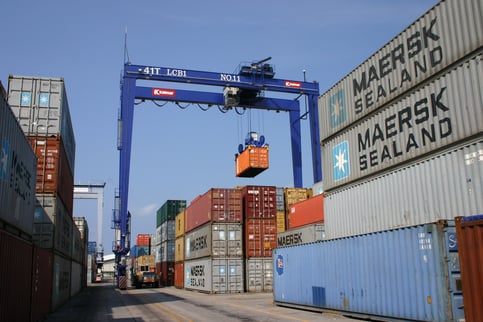 Spring is here, but in regards to freight volume, it still feels very much like peak season. Capacity continues to be tight across all modes, including intermodal, with no signs of abating soon. Currently all of the railroads are operating at peak capacity. The first quarter is normally one of the slowest times of the year, but demand is overwhelming the terminals. Needless to say, there have been major service issues with intermodal, particularly in Chicago.
Spring is here, but in regards to freight volume, it still feels very much like peak season. Capacity continues to be tight across all modes, including intermodal, with no signs of abating soon. Currently all of the railroads are operating at peak capacity. The first quarter is normally one of the slowest times of the year, but demand is overwhelming the terminals. Needless to say, there have been major service issues with intermodal, particularly in Chicago.
There are a LOT of moving parts on the intermodal side of freight shipping. Capacity issues can arise anywhere along the line from the trains themselves to what the terminals can handle to whether there are enough chassis, containers and drays available. If one part is not functioning smoothly, it will impact the entire system.
One of the key issues that has led to this extreme capacity crunch is the driver shortage and ELD mandate. Drayage carriers are key components in intermodal – someone needs to pick up the boxes from the ramps and haul them to their final destination. If there are too few drays, containers will sit at ramps awaiting pickup. This is what has been happening in Chicago and one of the reasons for the temporary embargoes at the 59th Street and Global 2 terminals. The UP’s Global 2 terminal was operating at 200% capacity at the end of February! The embargoes were necessary in order for the rails to try to clear out the excess volume in an effort to return to some semblance of normalcy. The results, unfortunately, are massive service delays.
We are also starting to enter the time period where volume ramps up even more. In the past, this hasn’t been much of a problem, but this year is different due to the extreme backlog of shipments from capacity issues that have been going on since the end of 2017. Unfortunately, capacity across the board does not appear to be loosening any time soon. Be prepared for service interruptions and delays as 2018 progresses across all modes.
Additional things to consider:
- Do NOT wait until the last days of the month to ship your freight! As much lead time that you can provide will help all providers plan more effectively.
- There will be delays. Especially over Chicago in intermodal. We are seeing delays in excess of 10 days, sometimes even longer, with all freight that even touches Chicago. Although in many cases the mode specific delays, specifically intermodal, cannot be prevented once the shipment is in transit, proactive planning and communication can help navigate shippers through this challenging environment.
- We are less than two weeks out until the ELD mandate will be enforced fully (April 1st), meaning that we will start to see the full effects that this is having on carrier capacity. It’s already bad but this could get worse. There are still carriers who have not become compliant – they will either leave the market, take their chances, or become compliant at the last minute.
- Rates are expected to continue to increase across all modes. We still expect to see volatility with spot market rates and in regards to contract rates, we are seeing mid to high single digits across the board for most business with specific shipment lanes taking double digit year over year increases.
With regards to steps that shippers can take to make your freight more attractive to carriers, we have some freight tips listed in previous postings that you can take a look at here and here. They include things such as the ability to establish equipment pools, providing flexibility with appointment times, quick loading and unloading. Essentially any part you can play in making things move more smoothly for drivers is a plus.

